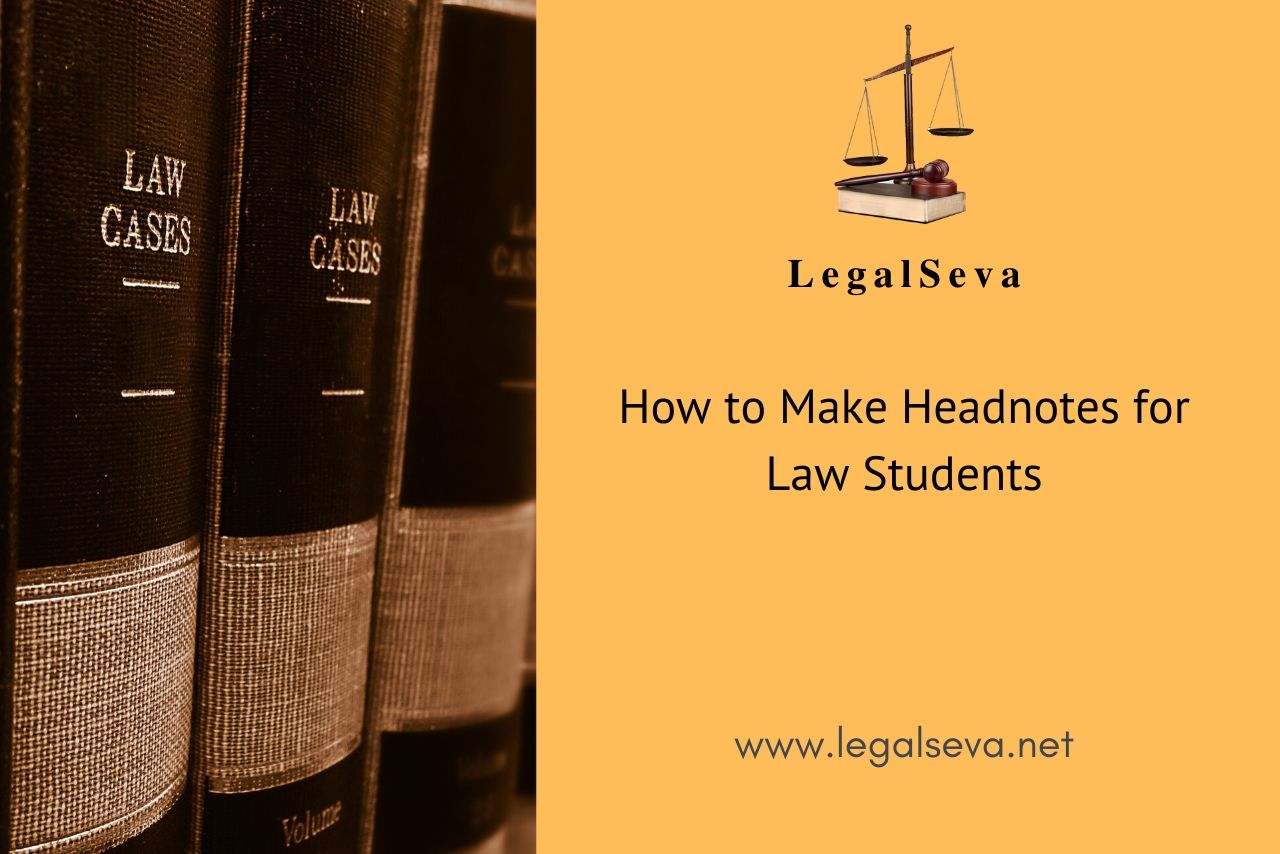Last Updated on March 27, 2024 by Satish Mishra
Post covers how to make headnotes for law students. Headnote is summary appearing above the judgment that summarizes the key legal points of a case. In short a legal opinion.
Usually Headnote precedes the ruling or a judgment.
Headnote are also called Heading in the judgment.
For a law student this must sound familiar; do you know how to write headnotes? Every big law firm will shoot you this question and if you know it, you’ll get brownie points, straight!
Recently, I faced the same question at one of my interviews at the most reputed law firm in Mumbai. It was a really nice experience in knowing what you know and what you don’t. Interviews are always a good way to know about your shortcomings, isn’t it?
Also Read- JUDGEMENT HEAD NOTE SERVICE
All About Headnotes For Law Students
Headnotes are not a part of the judgment and thus are not binding precedents.
Purpose of a headnote is to aid readers to search a particular judgment using keywords mentioned in the headnote. Thus, by just going through the summary para, one can make out whether the ruling is relevant or not.
Basic Elements of Headnote are:
- Keywords
- Facts
- Issues
- Areas of Law
- Legislations
- Submissions/Arguments
- Decision
- Ratio
Headnotes should answer nature of litigation, who is asking court and what remedy , reason of filing the case, relevant laws in question, and settled law in the issue.
Also Read- How do I read the judgments of the Supreme Court of India online?
Note Headnotes and Footnotes are different.
Headnotes are a summary of a case whereas footnotes are a supplemental information.
Conclusion- Make headnote in a manner that the case is presented in the most simplified form and specific to the law point in question. It is necessary to remove the useless facts from the headnote including proper nouns, irrelevant dates, figures etc.
Also Read- Guidelines for Writing Case Head Notes
Headnotes are one of the advanced methods of searching a judgment. It can help readers quickly identify the issue in a court ruling being discussed.
The main purpose of a headnote is to save time to get straight to the law point. It is an index to a judicial decision.
Opinion and comment are never a part of the headnote. The elements of headnote are:
- Listing of authorities
- Useful points
- Clear writing and preciseness
- Law point or question of law
How to write headnotes:
1 Write the Major Acts first like COI, CrPC, IPC
2 Differentiate the points with – double dash
3 Write full forms first time like Section, full name of the Act and acronym
4 Phrases and words especially for latin terms, you can write them separately
5 Follow the procedures, what comes first should be written first e.g. reinstatement and back wages
6 First letters capital and tell the relevant para’s from which the excerpt is taken
7 Always write in past tense, no present tense, Be grammatical correct.
8 Mention question of law rather than facts. Write with tags where judgment can be found.
9 You can write sub points in the judgment with a,b,c pointers, and Keywords.
10 Avoid using and in the keywords.
11 Create you unique style of writing dates, years, commas pattern will help you differentiate.
12 Take parts from the judgment using held and can use it as it is.
Headnotes are good in giving glimpse of all the proceedings of a trial.
Avoid use of difficult words in Headnotes and adoption of complex sentences.
About Good Headnotes– Explains the crux of a ruling, accurate, succinct and comprehensive.
You will find my this post useful here- Find Judgments Online Lawyers Advocates Students Freshers
More on 99888-17966.
More to come. Stay tuned
